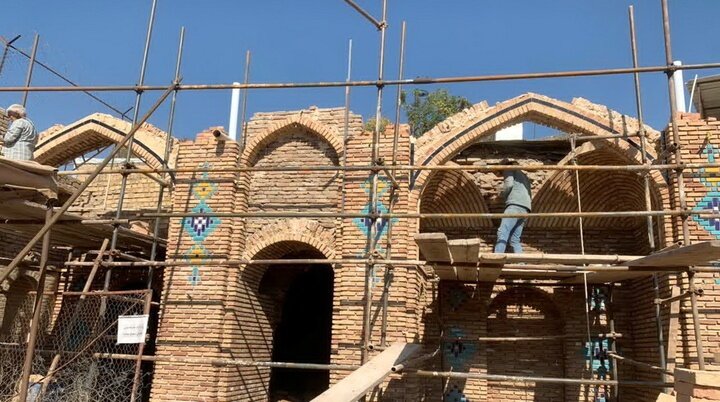Sa’d al-Saltaneh caravanserai set to transform into traditional hotel

TEHRAN – Sa’d al-Saltaneh caravanserai has undergone a massive restoration in a significant step towards preserving cultural heritage and promoting tourism, Qazvin province’s tourism chief said on Thursday.
The project aims not only to safeguard the architectural and historical significance of Sa’d al-Saltaneh but also to repurpose it into a traditional hotel, blending the allure of the past with the comforts of contemporary hospitality, Alireza Khazaeli explained.
The project is being carried out under the close supervision of cultural heritage experts, who are affiliated with the Ministry of Cultural Heritage, and is headed by the private owner of the caravanserai, the official said.
The caravanserai is flanked by a beautifully restored Qajar-era bazaar of the same name in Qazvin, which was once the capital of the mighty Persian Empire, under the Safavids, from 1548 to 98.
Last September, a selection of 54 roadside inns won a UNESCO label under the name: The Persian Caravanserai. The shortlist, however, is only a small percentage of the numerous caravanserais built along the ancient roads of Iran.
Caravanserai or caravansary is a compound word combining “caravan” with “sara”; the former stands for a group of travelers and the latter means the building. They often had massive portals supported by elevated load-bearing walls. Guest rooms were constructed around the courtyard and stables behind them, with doors in the corners of the yard.
For centuries, caravanserais constituted key parts of a rich circuit of travel and trade by providing shelter, food, and water for caravans, pilgrims, and other trekkers. For many travelers, staying in or even visiting a centuries-old caravanserai can be a broad experience; they have an opportunity to feel the past, a time travel back to a forgotten age.
The earliest caravanserais in Iran were built during the Achaemenid era (550 - 330 BC). Centuries later, when Shah Abbas I assumed power from 1588 to 1629, he ordered the construction of a network of caravanserais across the country. Such roadside inns were once constructed along ancient caravan routes in the Muslim world to shelter people, their goods, and animals. The former Silk Road may be the most famous example, dotted with caravanserais.
AFM
Leave a Comment